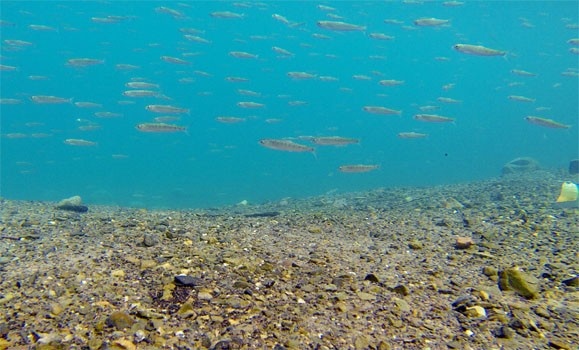Media Releases
» Go to news mainBig things come in small packages: the ocean's internet fits on a transmitter smaller than a usb

(HALIFAX, CANADA) – June 11, 2015 – A new paper, published in Science, details the explosion in aquatic animal tracking research over the past 30 years and its impact on discoveries about the movements, migrations, interactions and survival of both common and elusive aquatic species.
The review describes a profound revolution, including over 20 examples of scientific breakthroughs, in global ocean observation science achieved through advancements in acoustic and satellite telemetry—tracking via electronic tags placed on organisms ranging from tiny neonate fish to large whales, which transmit data to fixed or mobile receiver stations or orbiting satellites.
Electronic tags can now weigh less than a penny, can transmit for more than 10 years, and can be attached to almost any species, at any life stage, to collect high-resolution data in four dimensions (2D-horizontal, depth and time).
“The vastness and impenetrability of the ocean has historically limited our ability to acquire and process information on animal movements. Telemetry has significantly enhanced our capacity to predict and plan in the face of climate change and human influence,” said Sara Iverson, scientific director of the Ocean Tracking Network and corresponding author on the paper. Iverson is a marine biology researcher at ąúĂń˛ĘƱ, which is also home to the headquaters of the Ocean Tracking Network.
Telemetry data have revealed the often-mysterious migrations of endangered marine animals like , , and . These discoveries, and the increasingly sophisticated technology behind them, generate critical knowledge towards conservation recommendations. Tracking studies also pinpoint successes and limitations of current management plans. For example, acoustically tagged reef fish were shown to regularly move outside their Marine Protected Area, putting them at risk. Â
“In the future, we could be looking at spatially dynamic MPAs, which move annually with predictions of animals’ response to their environments,” said Nigel Hussey, lead author and researcher at the University of Windsor with the Ocean Tracking Network.
Acoustic and satellite telemetry studies are being combined with other biologi
